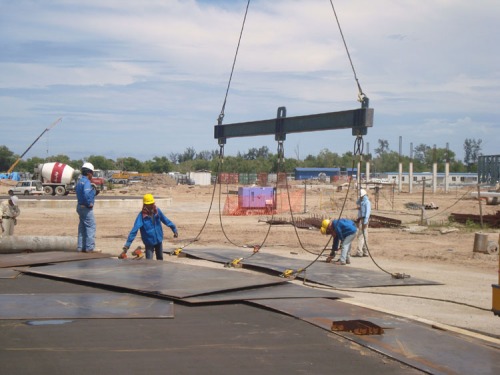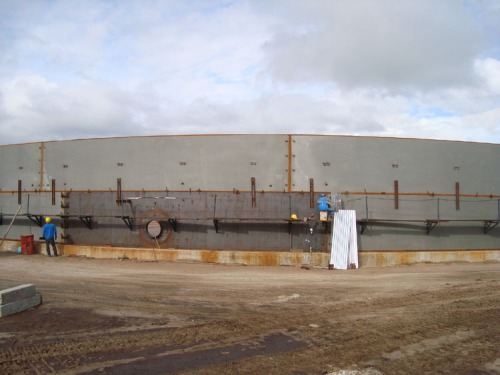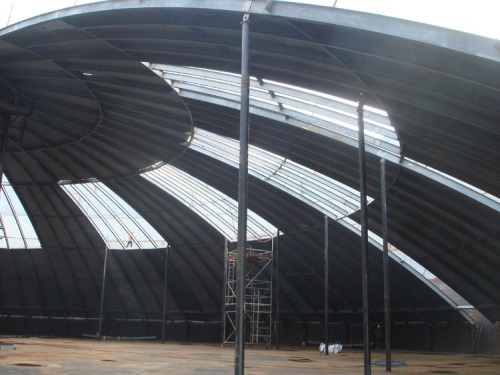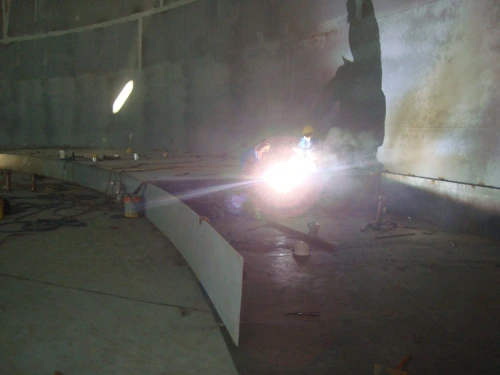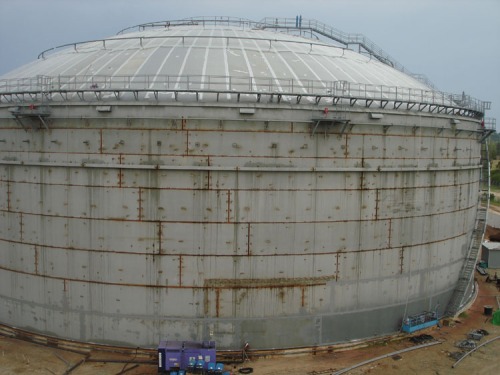Sequential pictures below are the air raising process of a dome roof tank in Brunei Methanol Project, Brunei Darussalam. The tank is Product Methanol Tank with 63 metres inside diameter, 18 metres shell height and 50.4 metres radius dome roof. The air raising process was done on April 27th, 2009.
In this project, Brunei Methanol Company, Sdn. Bhd. is the owner, Mitsubishi Heavy Industries, Ltd. is the main contractor, PT. Rekayasa Industri is the sub-contractor, where as Consortium of Adinin Works & Engineering and PT. Bangun Bejana Baja is the manufacturer of 15 units KD Tanks.

This picture was the air tight test for checking the roof air sealing. It was done one day before the air raising process to ensure there was no leak in the air seal. A group of people were left inside and the tank pressurize with air by blower. After the roof float a few centimetres and no leakage or folded seal found then the test was finished.

One day after the air tight test, the air raising was started. All crew was come to site in early morning.

The tool box meeting to ensure all crew knew their position and when they should do their job.

These were the equipment to raise the roof. There are 4 sets (tandem) of blower which powered by separated generator, and an air box as the access to enter or exit the tank. In the process not all the blower used to pressurize the tank, 1 set was used as a back-up blower.

This was the view of inside tank before air raised process. Inside the tank there were lamps to brighten inside, manometer as internal pressure indicator, and balancing wire fully installed.

This is double block for the rail of balancing wire. One wire sling come from above top shell through the roof and continue to the opposite side of roof tank then going down and fixed to the lower shell. There are 8 pair of double block to guide 16 balancing wire.

The complete set of double block, balancing wire and air seal.

The complete set of inside tank preparation with continuous air seal around tank.

On of the equipment outside tank was the T-frame. This part was to guide the balancing wire from inside tank and fixed the end of wire to outside shell. There are 16 T-frame to guide 16 balancing wire.

4 numbers of the balancing wire were equipped with load cell indicator. This equipment was electrically connected to processor (computer) to show the tension of the balancing wire.

4 numbers of laser level indicator placed around tank, of course to indicate the position of the roof during floating, and were connected to computer in the control room.

This is the reflector of laser level indicator.
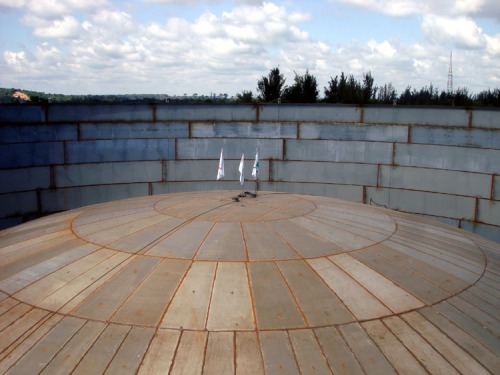
After ensure all the preparation were complete, include the flag of the involved party, the air raising can be proceed.
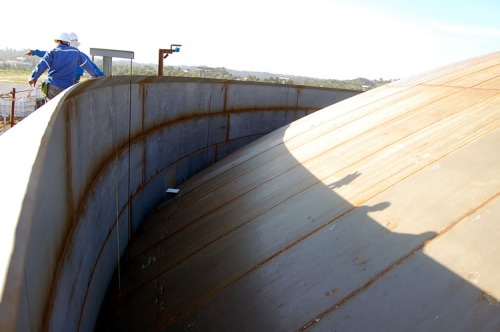
This was showing the roof floating more than half way. Approximately more 5 metres before the roof touching the tension bar.

The roof almost touching the tension bar and all crew already came to their position.

The fit-up of roof to tension bar can be started right after the roof touch the tension bar. In this process no welding was allowed before the entire jig were installed. This was to avoid the air seal got burn because of the torch from welding.

Another side of the tank during air raising process. One special platform provided for better view of commander to make instruction.

Fit-up process started with jig and horse-only without any welding, right after the roof touched the tension bar.

The installed jig and horse shoe. There are 96 set of jig required, each for one roof plate section.

After completed all jig, fit-up for flattened roof plate to tension bar started. U-bar and bullpen used during this process.

After roof fit-up completed, welding roof plate to tension bar can be started. One single pass weld minimum required before the jig can be removed from roof.

After completed one pass welding of roof to tension bar, it was save now to leave the tank, and take a lunch break. The lifting itself take time only 2 hours, but the whole process started from 6 o’clock in the morning and finished at 12 o’clock.

This is the team who involved during the air raising process. Posed on the top of dome roof, without me who was taken the picture at that time. 😦 Cheers!!
